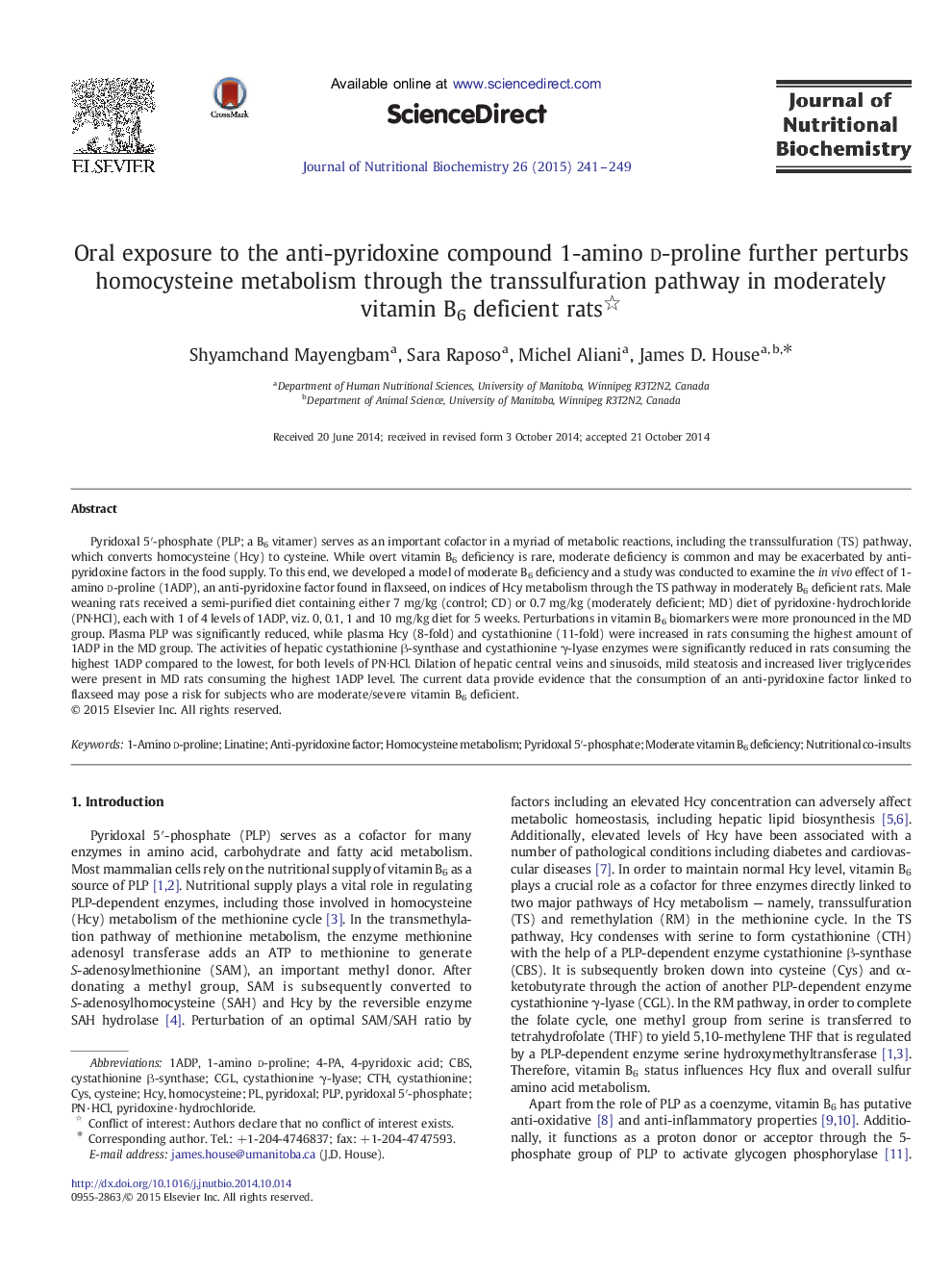| Article ID | Journal | Published Year | Pages | File Type |
|---|---|---|---|---|
| 8337020 | The Journal of Nutritional Biochemistry | 2015 | 9 Pages |
Abstract
Pyridoxal 5â²-phosphate (PLP; a B6 vitamer) serves as an important cofactor in a myriad of metabolic reactions, including the transsulfuration (TS) pathway, which converts homocysteine (Hcy) to cysteine. While overt vitamin B6 deficiency is rare, moderate deficiency is common and may be exacerbated by anti-pyridoxine factors in the food supply. To this end, we developed a model of moderate B6 deficiency and a study was conducted to examine the in vivo effect of 1-amino d-proline (1ADP), an anti-pyridoxine factor found in flaxseed, on indices of Hcy metabolism through the TS pathway in moderately B6 deficient rats. Male weaning rats received a semi-purified diet containing either 7 mg/kg (control; CD) or 0.7 mg/kg (moderately deficient; MD) diet of pyridoxine·hydrochloride (PNâHCl), each with 1 of 4 levels of 1ADP, viz. 0, 0.1, 1 and 10 mg/kg diet for 5 weeks. Perturbations in vitamin B6 biomarkers were more pronounced in the MD group. Plasma PLP was significantly reduced, while plasma Hcy (8-fold) and cystathionine (11-fold) were increased in rats consuming the highest amount of 1ADP in the MD group. The activities of hepatic cystathionine β-synthase and cystathionine γ-lyase enzymes were significantly reduced in rats consuming the highest 1ADP compared to the lowest, for both levels of PNâHCl. Dilation of hepatic central veins and sinusoids, mild steatosis and increased liver triglycerides were present in MD rats consuming the highest 1ADP level. The current data provide evidence that the consumption of an anti-pyridoxine factor linked to flaxseed may pose a risk for subjects who are moderate/severe vitamin B6 deficient.
Keywords
Related Topics
Life Sciences
Biochemistry, Genetics and Molecular Biology
Biochemistry
Authors
Shyamchand Mayengbam, Sara Raposo, Michel Aliani, James D. House,
